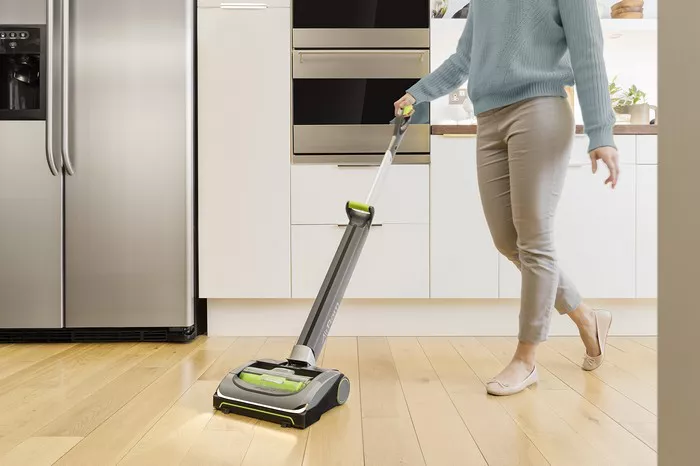Cleaning floors may seem like a mundane chore, but the method you choose can significantly impact the cleanliness and longevity of your flooring. From selecting the right mop to mastering the technique, this comprehensive guide will equip you with everything you need to know to achieve spotless floors efficiently and effectively.
Choosing the Right Mop
When it comes to mopping, not all tools are created equal. Different types of mops cater to varying flooring materials and cleaning needs:
1. Microfiber Mops: Ideal for most floor types, including hardwood, tile, laminate, and vinyl. Microfiber mops effectively trap dirt and grime without leaving behind streaks.
2. Sponge Mops: Great for tiled floors and linoleum. Sponge mops absorb liquid well but may struggle with tougher stains.
3. String Mops: Traditional string mops are suitable for heavy-duty cleaning on tile and concrete floors. However, they tend to retain more water and can leave streaks on certain surfaces.
4. Steam Mops: Best for sanitizing and disinfecting hard floors without the need for chemicals. Steam mops are safe for most sealed floors but should be avoided on unsealed hardwood.
Preparation
Before diving into mopping, take the time to prepare your space:
1. Clear the Floor: Remove any furniture, rugs, or objects that could obstruct the mopping process. This ensures that you can clean the entire surface thoroughly.
Selecting the Appropriate Cleaning Solution
The choice of cleaning solution depends on your floor type and the level of dirt:
1. Water: For lightly soiled floors, water alone may suffice. It’s a safe and eco-friendly option for routine cleaning.
2. Mild Detergent: For moderate dirt buildup, opt for a gentle detergent diluted in water. Avoid harsh chemicals that can damage floors or leave residue.
3. Specialized Cleaners: Some floors, such as hardwood or stone, may require specialized cleaners designed specifically for their surfaces. Always check manufacturer recommendations.
Proper Dilution
Regardless of the cleaning solution chosen, proper dilution is essential:
1. Follow Instructions: Adhere to the manufacturer’s instructions for diluting cleaning solutions. Using too much cleaner can leave behind residue and streaks, compromising the cleanliness of your floors.
Technique
Mastering the mopping technique is key to achieving pristine floors:
1. Start from the Farthest Corner: Begin mopping from the corner farthest from the room’s entrance. This ensures that you don’t walk on freshly cleaned areas.
2. Use Overlapping Strokes: Employ overlapping strokes to cover the entire floor surface systematically. This prevents missing spots and ensures thorough cleaning.
3. Apply Even Pressure: Maintain consistent pressure on the mop throughout the cleaning process. Avoid pressing too hard, as it may damage delicate flooring.
Avoiding Over-Wetting
Excessive water can spell trouble for certain flooring types:
1. Wring Out Thoroughly: Before mopping, wring out the mop to remove excess water. A damp mop is sufficient for most cleaning tasks, while a soggy mop can damage floors and leave streaks.
Rinsing
To prevent spreading dirt and grime, rinse the mop frequently:
1. Frequent Rinse: If using a cleaning solution, rinse the mop in clean water regularly. This removes accumulated dirt and ensures that you’re not spreading filth around.
Drying
Proper drying is crucial for maintaining the integrity of your floors:
1. Air Dry: Whenever possible, allow the floor to air dry naturally. This prevents water damage and minimizes the risk of slips and falls.
2. Use Dry Mop or Towel: If air drying isn’t feasible, use a dry mop or towel to remove excess moisture from the floor surface.
Maintenance
Caring for your mop ensures its longevity and optimal performance:
1. Thorough Rinse: After each use, rinse the mop thoroughly to remove dirt and detergent residue.
2. Air Dry: Allow the mop to air dry completely before storing it. This prevents mold and mildew growth.
3. Proper Storage: Store the mop in a well-ventilated area to promote drying and prevent unpleasant odors.
Additional Tips
For extra cleaning prowess, consider the following tips:
1. Spot Clean Spills Immediately: Address spills and stains promptly to prevent them from setting into the floor.
2. Use Protective Pads: Place protective pads under furniture legs to prevent scratches and scuffs on hardwood and laminate floors.
3. Schedule Regular Deep Cleanings: Incorporate deep cleaning sessions into your maintenance routine to tackle embedded dirt and grime.
Conclusion
With these expert tips and techniques, you’ll be well-equipped to tackle any floor cleaning task with confidence and efficiency. Remember, a little effort goes a long way toward achieving spotless, gleaming floors that enhance the beauty of your space.

